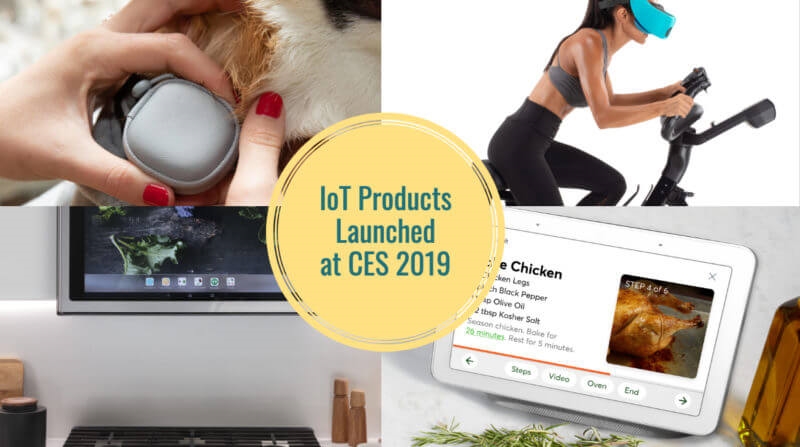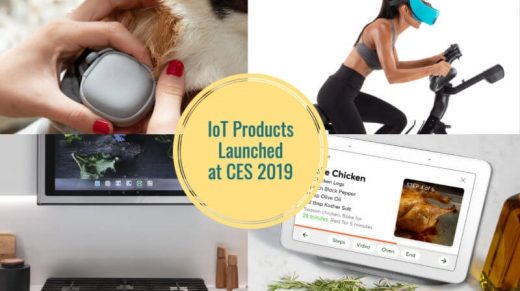How are marketers using IoT in 2019?
Tell us your IoT plans in our short poll; we’ll share the answers in a future story.
More than 24 billion internet-connected devices are expected to be installed globally by 2020, according to Business Insider. But how are marketers taking advantage of the opportunities offered by this dramatic growth?
Smart speakers a good starting point
A steep rise in the purchase of voice devices, as well as smart home devices like the Amazon-owned Ring and Blink, show that consumers are becoming increasingly comfortable and receptive to using devices that interact with each other in the real world.
In the meantime, global smart speaker shipments grew 137 percent year over year in the third quarter of 2018, up from less than half that figure (8.3 million) a year ago. As a result, a smart speaker strategy has emerged as a key entry point for marketers who want to implement IoT.

Samsung, Nordic Track, Innit and GE introduced new IoT products at CES earlier this month
Alan LaFrance, marketing strategy manager for service marketplace Lawnstarter, said he believes that smart speakers will be the “next major app front as consumers learn how to use and trust virtual assistants.”
“The price point is there, they are easy to set up and use and they have substantial backing from Amazon and Google. We definitely want to be positioned ahead of the curve,” LaFrance said.
As its first foray into IoT, Lawnstarter reserved an Alexa skill name for its brand. “We definitely recognize the viability of IoT and are keeping a close eye on its growth within the market,” LaFrance said.
Alexa skills are also a key part of inbound marketing agency IMPACT’s strategy, says Kathleen Booth, its vice president of marketing,
“We’re exploring a variety of ways that we can leverage smart speakers and home assistant devices to deliver content and connect with our audience,” Booth said. “We have already begun this effort with an Alexa Skill for one of our podcasts and are considering launching a new daily news update that would be tailored for delivery via voice search.”
With more devices, comes more data
And all that data needs to be processed and analyzed, creating a need for integrated agencies that can handle the job.
There are signs that the industry is responding to this need. In 2018, British-based Arm Holdings brought its vision of a trillion connected devices by 2035 a little closer with its purchase of Stream Technologies, Mbed IOT Device Management Platform and data firm Treasure Data to form what it calls the “industry’s first end-to-end IoT connectivity, device and data management platform.”
Arm Treasure Data’s Marketing Director Erik Archer Smith says that “while IoT is not something we see often as a budget line item, customers and prospects are talking about it much more frequently.”
“[IoT] is a real and an increasingly important part of [marketers’] future,” Smith said. “One of the biggest challenges we hear repeatedly is that enterprises are anxious to better track their customer’s journeys. Well, these days that means both online and offline activity. Improving customer experience, better personalization, customer journey mapping – these are all terms that are critical elements in 2019 strategies. And in order to do those things successfully, brands must be able to leverage IoT data.”
Room to grow
As IoT technologies — and the technologies to handle the IoT technologies — mature, so will marketers’ abilities to easily implement IoT strategies.
“For example, we’re having to re-examine our marketing and sales workflows in order to realign them from both a holistic and use case perspective,” JD Parkman, CEO and digital marketing engineer for Florida-based digital agency Marketing Media Wizard said. “The biggest hurdle we have to overcome is the variety of IoT devices homeowners have to select from, which obviously is going to be dependent on each individual since it’s not yet a standard household product, like say a refrigerator or dishwasher is traditionally considered to be, nowadays.”
And for the time being, there’s a question of whether it makes sense for a business to invest in IoT, as less affluent consumers aren’t necessarily able to purchase these types of devices.
“IoT household adoption will be more polarized towards the affluent, especially over the next 5 or 10 years, at which point the costs to obtain those items will have significantly dropped and become affordable,” said Parkman.
What about you? Is IoT part of your company’s strategy this year?
Fill out this poll and tell us what you have planned. We’ll share the results with you in a future story.
Marketing Land – Internet Marketing News, Strategies & Tips
(14)



